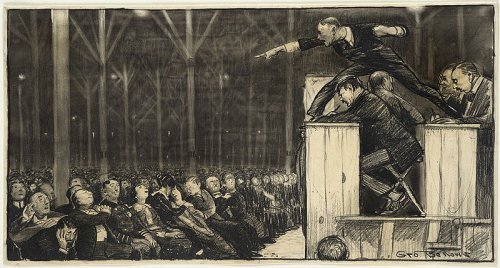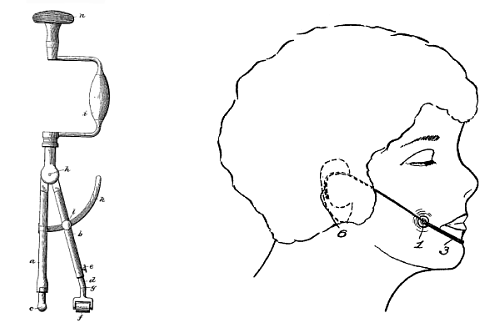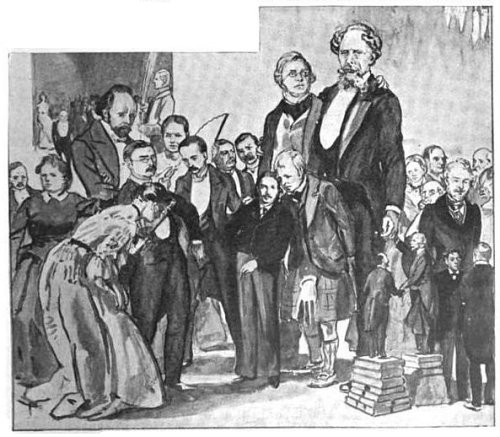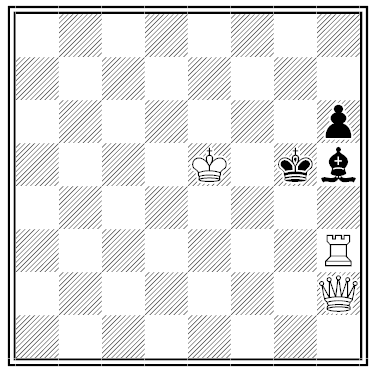Author: Greg Ross
Stare Conditioning
In 1958, B.F. Skinner and Erich Fromm attended the same California symposium. Skinner found that Fromm “proved to have something to say about almost everything, but with little enlightenment,” and “when he began to argue that people were not pigeons, I decided that something had to be done”:
On a scrap of paper I wrote ‘Watch Fromm’s left hand. I am going to shape a chopping motion’ and passed it down the table to [Halleck Hoffman]. Fromm was sitting directly across from the table and speaking mainly to me. I turned my chair slightly so that I could see him out of the corner of my eye. He gesticulated a great deal as he talked, and whenever his left hand came up, I looked straight at him. If he brought the hand down, I nodded and smiled. Within five minutes he was chopping the air so vigorously that his wristwatch kept slipping out over his hand.
“William Lederer had seen my note, and he whispered to Halleck. The note came back with an addendum: ‘Let’s see you extinguish it.’ I stopped looking directly across the table, but the chopping went on for a long time. It was an unfair trick, but Fromm had angered me — first with his unsupported generalizations about human behavior and then with the implication that nothing better could be done if ‘people were regarded as pigeons.'”
(From Skinner’s 1983 memoir A Matter of Consequences.)
Poetry Piecemeal
Lexicographer Wilfred Funk declared these the 10 most beautiful words in English:
- chimes
- dawn
- golden
- hush
- lullaby
- luminous
- melody
- mist
- murmuring
- tranquil
Playwright Edward Sheldon declared these the ugliest:
- funeral parlor
- galluses
- housewife
- intelligentsia
Charles V said, “We should speak Spanish with the gods, Italian with our lover, French with our friend, German with soldiers, English with geese, Hungarian with horses, and Bohemian with the devil.”
See Euphony.
Unquote

“There is not one command in all the Gospel for public worship. … The frequent attendance at it is never so much as mentioned in all the New Testament.” — William Law
Waste Paper
John Warburton (1682–1759) collected drama manuscripts during a fruitful period in English literature. Unfortunately, he’s remembered chiefly for his carelessness — he left a pile of 50 manuscripts in his kitchen and returned months later to find that his cook had destroyed nearly all of them in lighting fires and lining pie pans.
Among the losses were plays by Massinger, Ford, Dekker, Greene, Davenant, Tourneur, Rowley, Chapman, Glapthorne, and Middleton — and three by William Shakespeare.
See A Poor Review and A Loss for Words.
Cute or Bust

Martin Goetze’s 1896 “device for producing dimples,” left, was uncomfortably similar to a hand drill — an ivory knob was placed on the site and a rotating cylinder made the surrounding skin “malleable.”
Evangeline Gilbert’s improvement, right, patented in 1926, was essentially a headpiece that drove depressions into the cheeks. “The length of time on this pressure will vary with different persons, but it has been found that, if the appliance be used during the night, dimples will be present during the next day.”
Baltasar Gracian wrote, “Beauty and folly are generally companions.”
Literary Stature

Comparative popularity of British novelists at the end of the 19th century, from Strand, August 1906. The giant is Dickens, followed by Thackeray and the now largely forgotten Hall Caine. Lesser mortals, left to right, are Thomas Hardy, Mary Elizabeth Braddon, Marie Corelli, Rudyard Kipling, Mary Augusta Ward, J.M. Barrie, Arthur Conan Doyle, Stanley Weyman, Robert Louis Stevenson, Walter Scott, Henry James, Charlotte Brontë, George Meredith, Anthony Trollope, Charles Kingsley, Edward Bulwer-Lytton, Israel Zangwill, Charles Reade, and E.F. Benson.
“It should be pointed out that this diagram does not pretend to apportion the degree of contemporary literary reputations. It only shows what kind of fiction has been most read by the masses during the past twenty years.”
In a Word
pregustation
n. the act of tasting before another
On June 21, 1931, a brace of partridges was ordered from a poulterer at Aldershot, Hampshire, for delivery to the nearby bungalow of Lt. Hubert Chevis. A cook stored them in an open meat safe outside the building, then roasted them and served them to Chevis and his wife.
Chevis took one mouthful and said, “It tastes horrible!” His wife touched it with her tongue and pronounced it “fusty.” Both were taken ill within minutes, and Chevis died of strychnine poisoning early the following morning.
On the day of Chevis’ funeral, and before any story had appeared in the press, his father received a telegram that read “HOORAY. HOORAY. HOORAY.” The form had been signed with the name Hartigan and the address of a Dublin hotel, but no one by that name was found there.
When the Daily Sketch published a photograph of this telegram on Aug. 1, the editor received a postcard:
Dear Sir,
Why do you publish the picture of the Hooray telegram.
J. HARTIGAN
And Chevis’ father received a further postcard on Aug. 4:
It is a mystery they will never solve. Hooray.
J. HARTIGAN
He was right. Someone had found an opportunity to poison the birds between their arrival in a locked van and their being served, but Chevis had no known enemies and no one recognized the name Hartigan. The case has never been solved.
Off the Menu
On a Canadian speaking tour, Winston Churchill found himself sitting next to a Methodist bishop.
A young waitress offered each of them a glass of sherry.
Churchill accepted his, but the bishop said, “Young lady, I’d rather commit adultery than take an intoxicating beverage.”
Churchill said, “Come back, lassie, I didn’t know we had a choice!”
Math Notes


